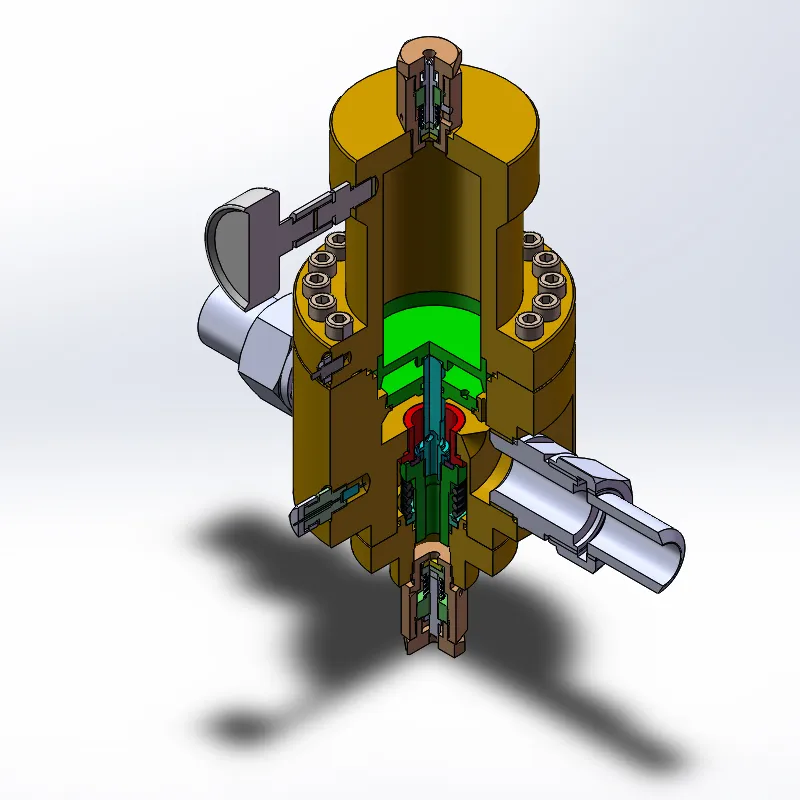
Dec . 12, 2024 13:29
Back to list
محطة تخفيض ضغط الغاز
Understanding Gas Pressure Reduction Stations
Gas pressure reduction stations (GPRS) play a crucial role in the transportation and distribution of natural gas. These facilities ensure that the gas reaches consumers at a safe and usable pressure, making them essential components of modern energy infrastructure.
What is a Gas Pressure Reduction Station?
A gas pressure reduction station is designed to lower the high-pressure gas that is transported through pipelines to a level suitable for residential, commercial, and industrial use. Natural gas is transported over long distances in high-pressure pipelines to minimize energy loss and ensure efficient delivery. However, the pressure of the gas must be reduced before it can be utilized safely in homes and industries.
The Importance of GPRS
1. Safety The primary role of a GPRS is to ensure safety. High-pressure gas can be extremely dangerous, leading to leaks, explosions, and other hazards. By reducing the pressure, these stations protect both infrastructure and the public.
2. Efficient Distribution GPRS facilitate efficient gas distribution by controlling the pressure levels at various points in the pipeline network. This ensures that gas can be fed into the local distribution systems without compromising safety.
3. Regulatory Compliance Gas utilities are required to meet specific safety and operational standards. Pressure reduction stations help companies comply with these regulations by providing controlled environments for gas pressure management.
4. Operational Flexibility Gas demand can fluctuate based on time of day, season, and other factors. GPRS allow operators to adjust gas flow and pressure according to current demand, improving overall system reliability.
.
A typical gas pressure reduction station consists of several key components
محطة تخفيض ضغط الغاز

- Pressure Regulators These devices automatically reduce the gas pressure to the desired level. They are critical for maintaining consistent pressure and ensuring that gas is delivered safely.
- Control Valves Control valves manage the flow of gas through the station and can be adjusted to respond to changes in demand.
- Meters Gas meters measure the volume of gas flowing through the station, allowing operators to monitor usage and ensure billing accuracy.
- Parents These are safety features that automatically shut down or divert gas flow in the event of a malfunction or emergency.
- Telemetry Systems Advanced stations often include remote monitoring and control systems that allow operators to manage the station from a distance, ensuring quick responses to changes or emergencies.
Challenges in Gas Pressure Management
Managing gas pressure comes with its own set of challenges. One of the main issues is ensuring that the stations can cope with peak demand periods. When demand surges, such as during extreme weather, GPRS must function effectively to provide adequate supply without compromising safety.
Another challenge is the aging infrastructure in many regions. Some GPRS have been in operation for decades, and maintaining their safety and efficiency is critical. Regular maintenance, retrofitting, or replacing obsolete components is essential to meet modern safety standards.
The Future of Gas Pressure Reduction Stations
As the world shifts towards more sustainable energy solutions, GPRS will continue to evolve. The integration of smart technology, such as predictive analytics and real-time monitoring, can enhance efficiency and safety. Additionally, with the growing interest in alternative fuels and renewable energy sources, GPRS may need to adapt to handle new types of gases, such as biogas or hydrogen.
In conclusion, gas pressure reduction stations are vital to the safe and efficient delivery of natural gas to consumers. By understanding their functioning, importance, and challenges, stakeholders can work towards enhancing safety and reliability in the gas distribution network. As technologies develop and energy demands change, GPRS will undoubtedly play an essential role in the energy landscape of the future.
Next:
Latest news
-
Safety Valve Spring-Loaded Design Overpressure ProtectionNewsJul.25,2025
-
Precision Voltage Regulator AC5 Accuracy Grade PerformanceNewsJul.25,2025
-
Natural Gas Pressure Regulating Skid Industrial Pipeline ApplicationsNewsJul.25,2025
-
Natural Gas Filter Stainless Steel Mesh Element DesignNewsJul.25,2025
-
Gas Pressure Regulator Valve Direct-Acting Spring-Loaded DesignNewsJul.25,2025
-
Decompression Equipment Multi-Stage Heat Exchange System DesignNewsJul.25,2025

